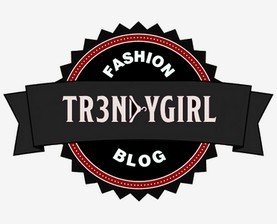Varicose veins are a common issue, impacting an estimated 30% of the population. For some, varicose veins are an unsightly problem at their most extreme; for others, however, vein issues can lead to painful problems that make everyday activities a challenge. When veins in the leg become compromised and no longer function adequately, varicose veins form just beneath the skin’s surface. They often appear as purple or dark blue bulges in the legs that can result in itching, swelling, and redness.

In many cases, hiding varicose veins is a necessary task, and fortunately, there are solutions to the problem that are easy to implement. However, it is crucial to recognise that the research behind why varicose veins appear shows that there is no way to prevent them from occurring altogether. Also, there is no single cause behind varicose veins, but understanding the risk factors associated with vein disorders can help toward creating a plan for treatment.
Understanding Varicose Veins Causes
Many factors may lead to varicose veins, but not one is known to be the most prominent driving force. Instead, as a specialist in treating varicose veins explains, anyone can get varicose veins even if risk factors are not in play. However, it is widely agreed upon that women are more likely to develop vein issues over time, due to aging, pregnancy, or a family history of vein disorders. Among all adults, though, varicose veins may be the outcome of being overweight, having poor circulation throughout the body, or experiencing chronic constipation which adds to the pressure placed on the veins over time. Additionally, those who stand or sit for extended periods may experience vein issues at some point.
When vein health is compromised, blood is not able to flow as easily from the legs back to the heart. This creates pooling at the impacted vein, resulting in the bulging and twisting that are characteristic of varicose veins. Broken veins often result in unsightly bulges that, when left untreated, lead to more severe health issues including pain and discomfort. However, the following at-home solutions may be beneficial in reducing varicose veins, both from a cosmetic and a pain perspective.
Get Plenty of Exercise
Nearly all experts agree that getting regular physical activity helps promote a healthy life. When it comes to varicose veins, this recommendation stands firm. Exercise helps promote efficient blood flow, and it strengthens the muscles of the legs over time. Both of these outcomes can help reduce the appearance of varicose veins and decrease pain and swelling in the legs. However, not all physical activity is created equal when varicose veins are involved. Vein specialists suggest focusing on low-impact exercises, like swimming, biking, or using the elliptical to not add undue pressure to the veins.
Add Compression and Elevation to Your Routine
In addition to routine exercise, adding compression and leg elevation to the mix can be beneficial. Blood flow is positively impacted by compression, as it is with lifting the legs above the heart. These remedies, either together or independently, provide for healthier circulation and therefore a reduction in varicose vein symptoms. Planning to take breaks from standing or sitting also helps on this front.
Try Dietary Changes
Although the research on dietary changes and their influence on varicose veins is small compared to the connection between compression and exercise on vein issues, some experts suggest focusing on food intake can help. Eating a diet high in fiber, flavonoids, and potassium – all nutrients beneficial to blood flow – may lead to reduced symptoms of varicose veins. Increasing water intake can also be helpful, as can maintaining a healthy, well-balanced diet to keep excess weight at bay.
Consult a Specialist
Finally, if varicose veins do not subside after attempting one or more of the at-home remedies mentioned above, consulting a vein specialist is the best course of action. After a brief examination of the impacted veins, medical professionals can provide a treatment plan based on the severity of the vein issues and the correlated symptoms. For some, laser therapy can be a viable solution. Through this minimally-invasive procedure, patients have broken veins eliminated. This short treatment allows blood to flow to the healthy veins instead, reducing the look and feel of varicose veins permanently.
When varicose veins become problematic, a treatment plan should be made to correct the issue. A combination of dietary changes, exercise, compression, and professional intervention can make a significant difference in how varicose veins impact one’s well-being.

Very interesting this topic, it is better to prevent not to regret it is good to know that this uncomfortable problem has a solution and thus be able to our legs without regrets.